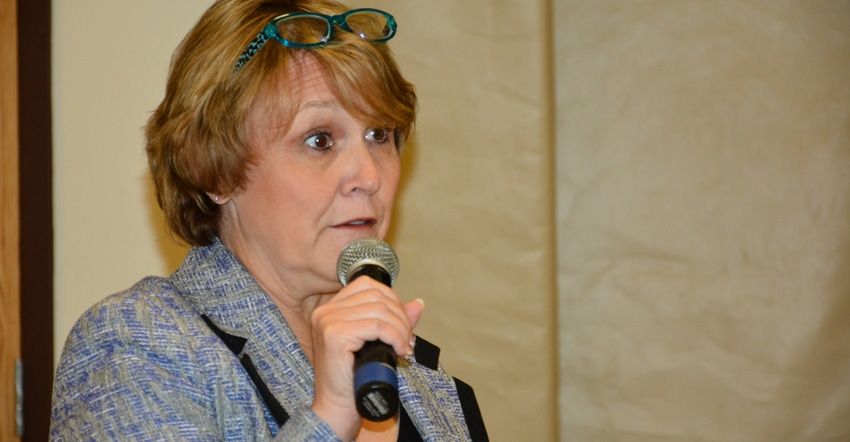
Alfalfa growers want parity in public research dollars, and the National Alfalfa Forage Alliance intends to do everything it can to help them get there.
Beth Nelson, president of NAFA, gave an industry update to alfalfa growers at this year’s Kansas Forage and Grassland Council winter conference in Salina.
Nelson said almost $7 million has been devoted to alfalfa research since 2014, and that Sen. Jerry Moran, R-Kan., has been a strong ally in helping to advocate for more money for alfalfa research both at the Agricultural Research Service and through public university research, including at Kansas State University.
For 2018, Nelson said, the status quo of $2.5 million is on target to be approved, and Kansas now has a principal investigator for alfalfa research.
“We are starting to see scientists showing interest in doing alfalfa research,” she said. “That’s a giant step forward.”
Nelson said that advertising for NAFA features a photo of the “Alfalfa” character from Little Rascals because his face literally has more recognition that the nation’s third largest crop with people in power. She told a story of speaking to a congressional aide who thought she had made an appointment to talk about “4-H.” She had to explain that she actually wanted to talk about “for-age.”
Among the advances that NAFA has made is the institution of a checkoff to raise research and marketing dollars. The checkoff is $1 per bag of seed from participating seed dealers and provides money to fund research on projects and proposals submitted by research scientists.
One promising area of alfalfa recognition, she said, is the fact that the crop provides an efficient carbon sink and is one of the most sustainable and environmentally friendly crops being grown by American farmers.
Nelson said she hopes to see the recognition of alfalfa’s place in the cropping system as a pathway for spurring more resources devoted to research into new varieties, risk management tools and crop protection services.
“You hear talk about the ‘big five’ whenever crop insurance comes up: corn, soybeans, wheat, cotton and rice,” she said. “When you look at the reality of crop value, those are not the top five. Alfalfa is a solid third when you look at the value of all U.S. crops. We just need to get the word out. That’s our goal.”
About the Author(s)
You May Also Like




